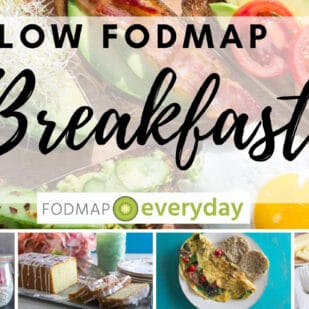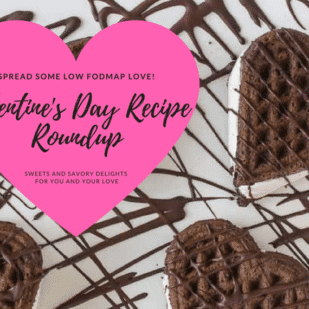Breakfast, often dubbed the day’s most essential meal, plays a pivotal role in setting the tone for our energy levels and overall well-being. It’s the meal that breaks our overnight fast, replenishing our body with the vital nutrients and energy it craves. But here’s the catch: not every breakfast dish is a winner.
In this deep dive, we’re exploring the top breakfast choices in the U.S., breaking them down into two categories: kiddos and adults. Let’s uncover the truths about our morning munchies!
Starting Young: What We Are Feeding Our Children?

The first list is based on the best-selling children’s cereals on the market in 2018, according to a report by Statista and data from IRI. Cereal is a common choice for children’s breakfast, as it is easy to prepare, convenient to eat, and often appealing to their taste buds. However, many cereals are also high in sugar, low in fiber, and lacking in essential vitamins and minerals. The top 10 children’s cereals in the U.S. by revenue in 2018 were:
Cinnamon Toast Crunch
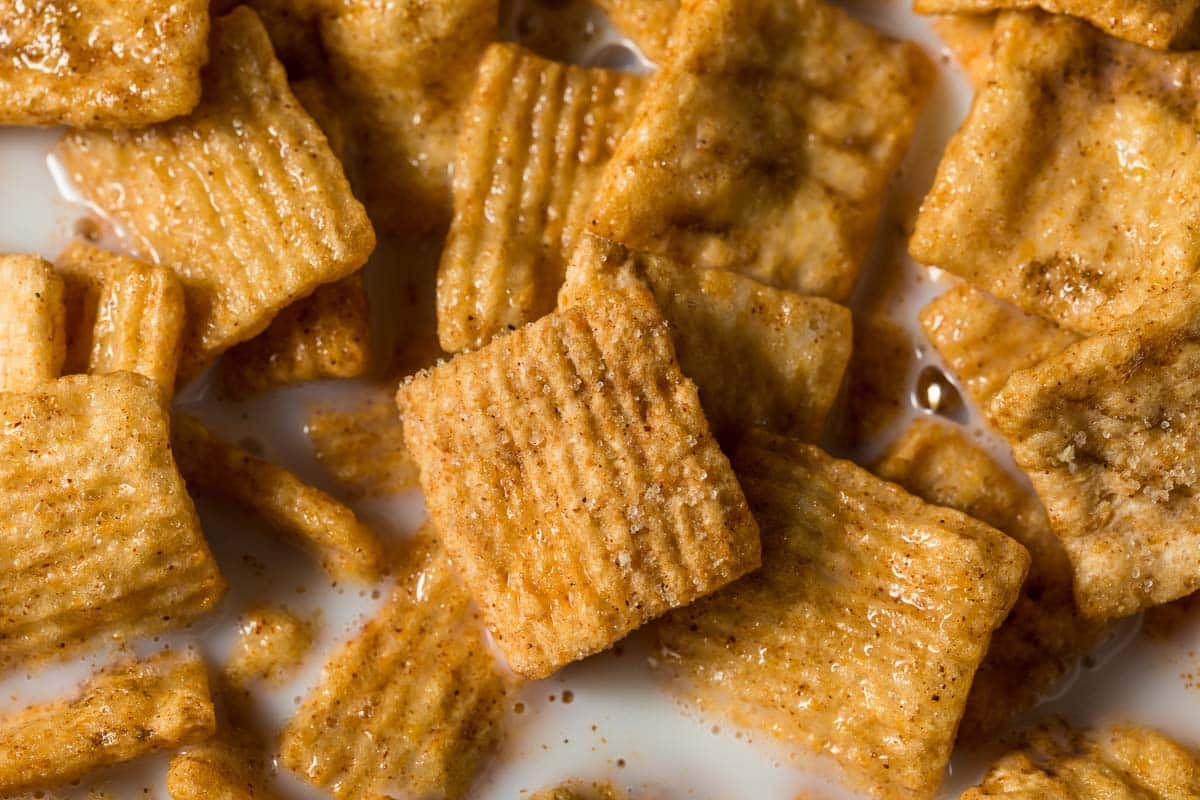
This cereal, made by General Mills, features crispy wheat and rice squares coated with cinnamon and sugar. It was the top-selling children’s cereal in the U.S., with sales of 491.6 million U.S. dollars and 147.6 million boxes sold.
Rice Krispies
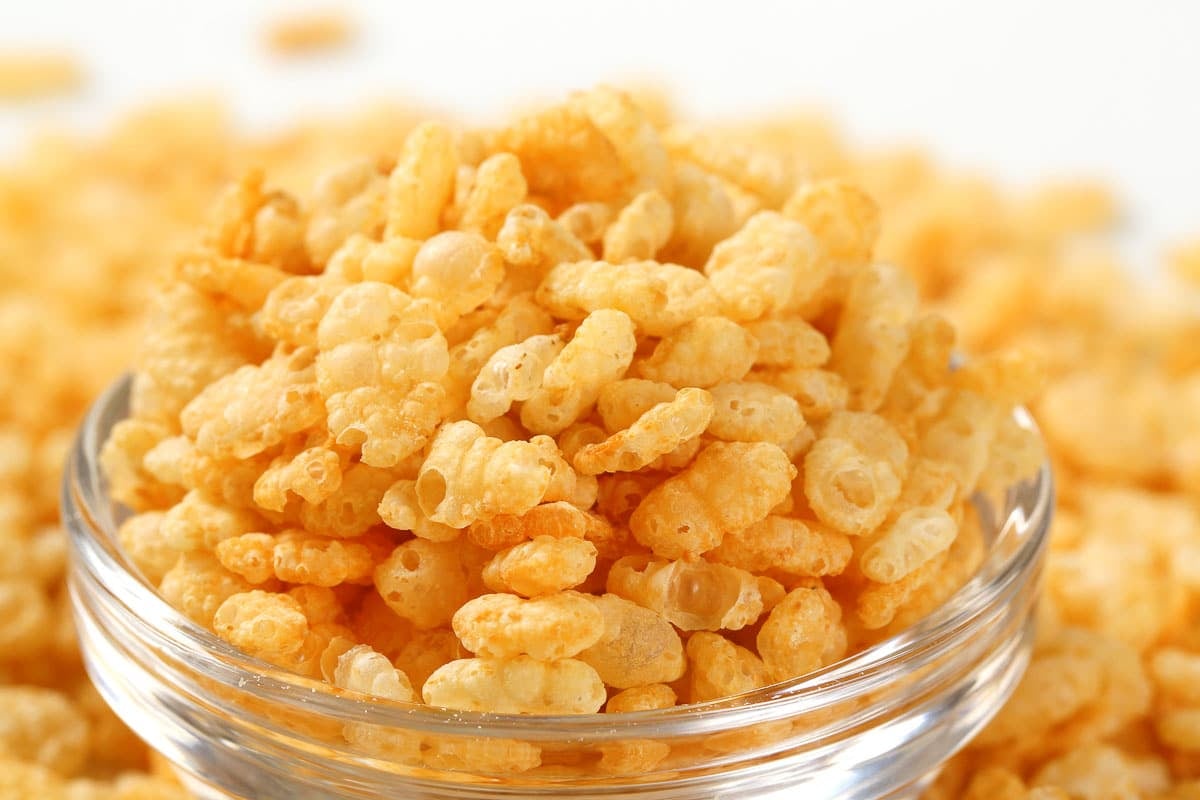
This cereal, made by Kellogg’s, consists of toasted rice grains that make a snapping, crackling, and popping sound when milk is added. It was the second best-selling children’s cereal in the U.S., with sales of 313.9 million U.S. dollars and 90.1 million boxes sold.
Frosted Flakes
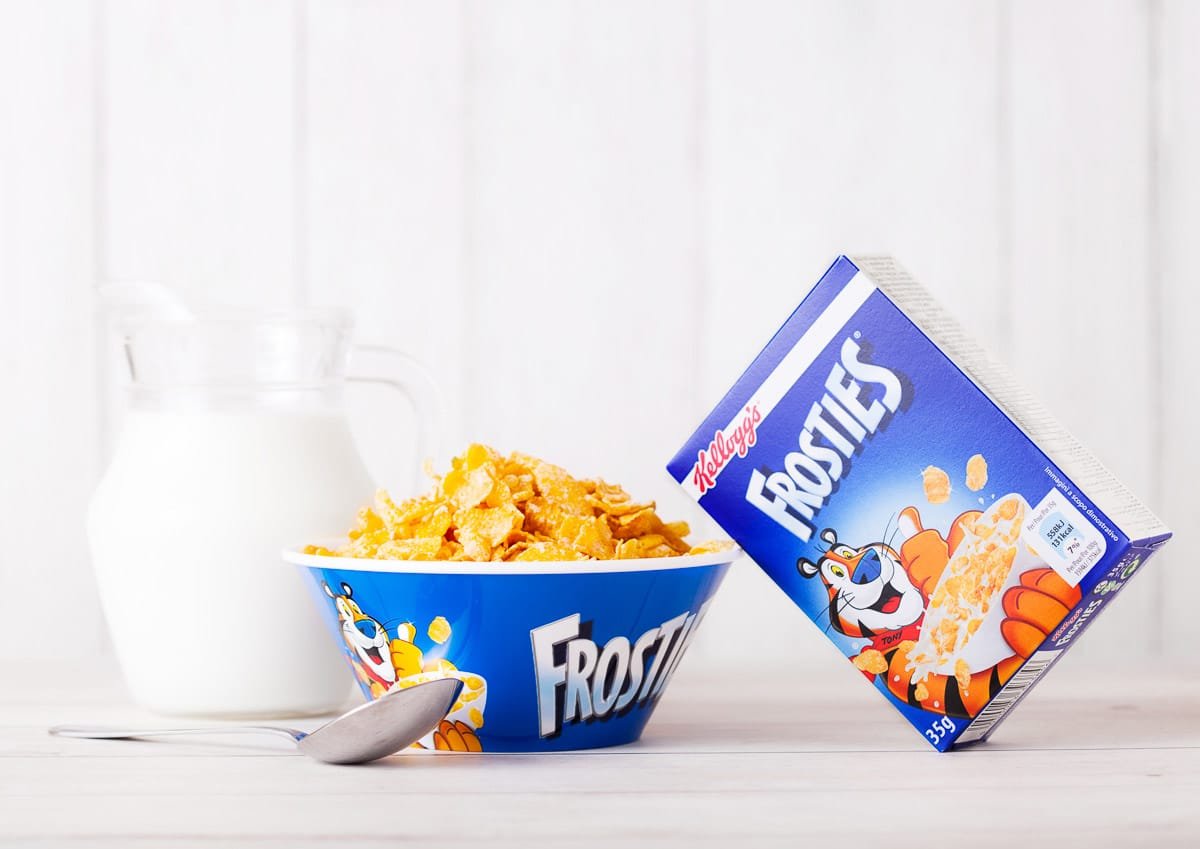
This cereal, made by Kellogg, features crunchy corn flakes coated with sugar. It was the third best-selling children’s cereal in the U.S., with sales of 280.6 million U.S. dollars and 81.1 million boxes sold.
Lucky Charms
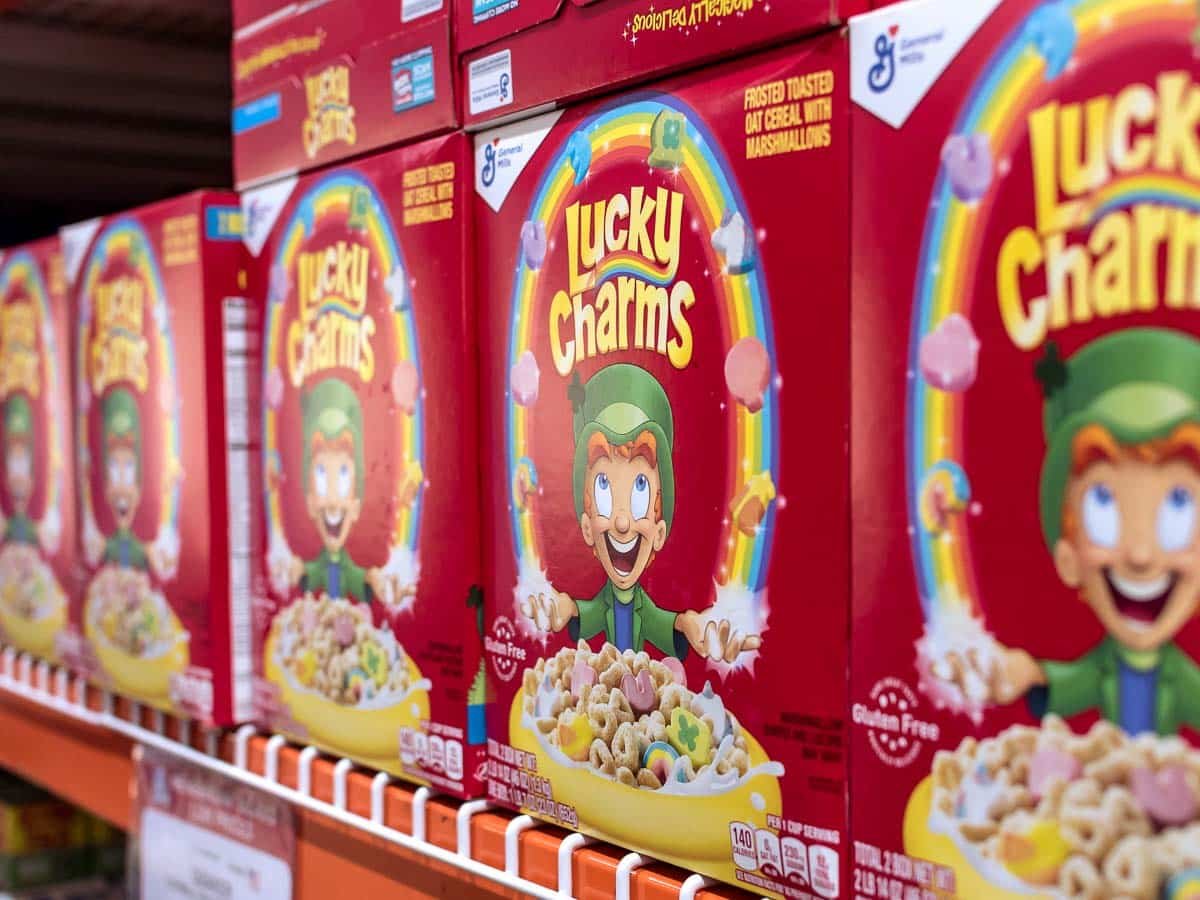
This cereal, made by General Mills, contains toasted oat pieces and colorful marshmallow shapes inspired by Irish folklore. It was the fourth best-selling children’s cereal in the U.S., with sales of 264.4 million U.S. dollars and 81 million boxes sold.
Froot Loops
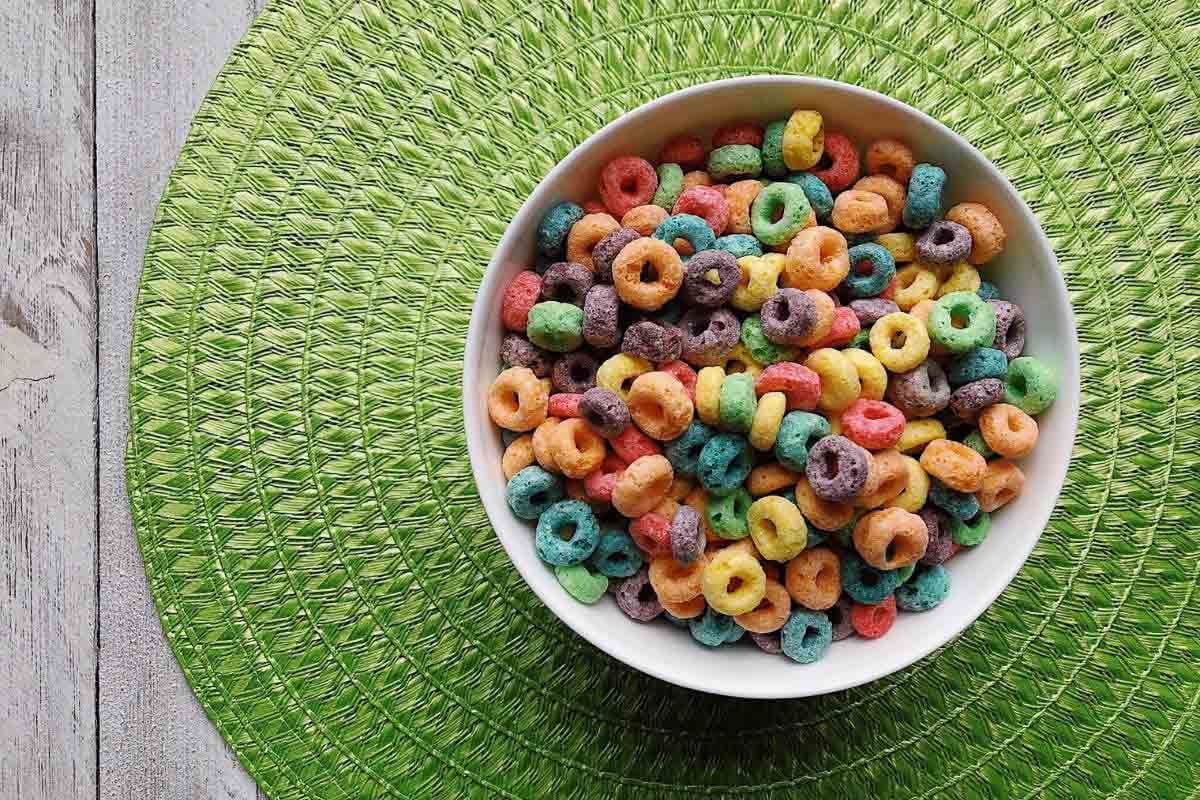
This cereal, made by Kellogg, consists of sweetened, fruit-flavored rings of corn, wheat, and oat. It was the fifth best-selling children’s cereal in the U.S., with sales of 247.1 million U.S. dollars and 71.5 million boxes sold.
Frosted Mini-Wheats
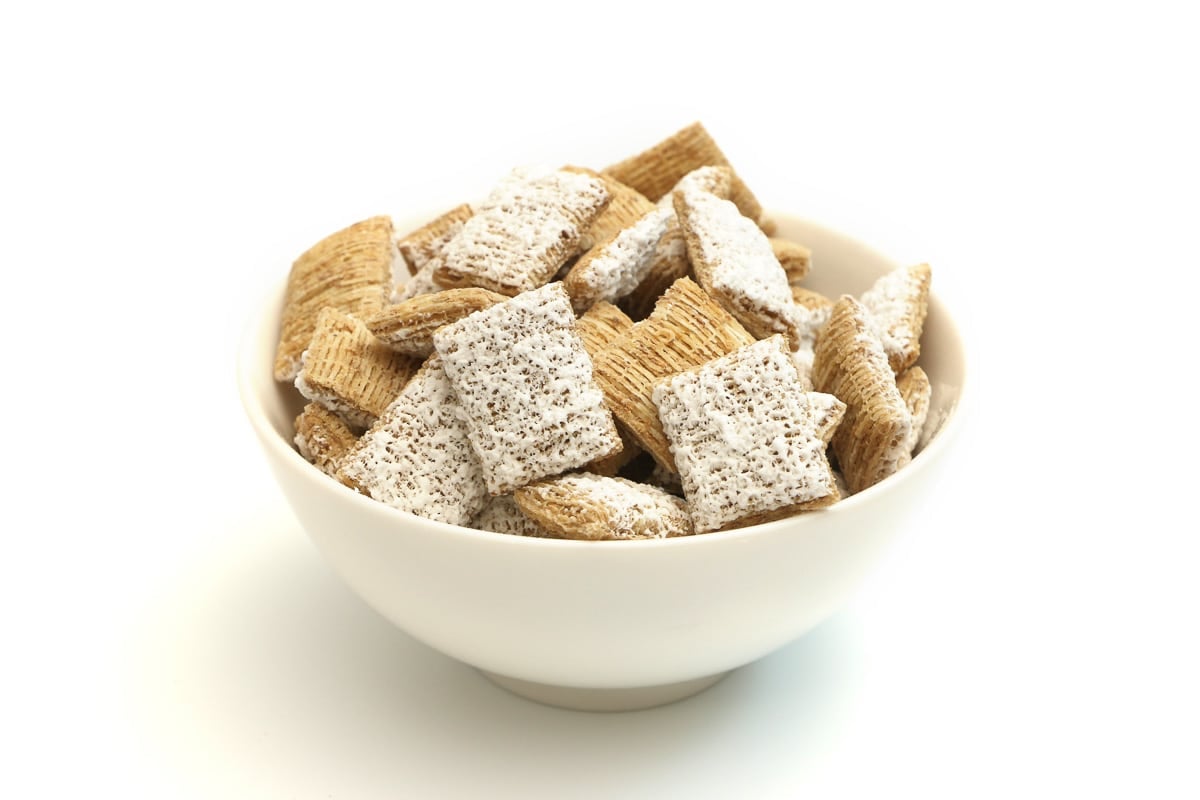
This cereal, made by Kellogg, features shredded wheat biscuits with a layer of frosting on one side. It was the sixth best-selling children’s cereal in the U.S., with sales of 223 million U.S. dollars and 62 million boxes sold.
Life
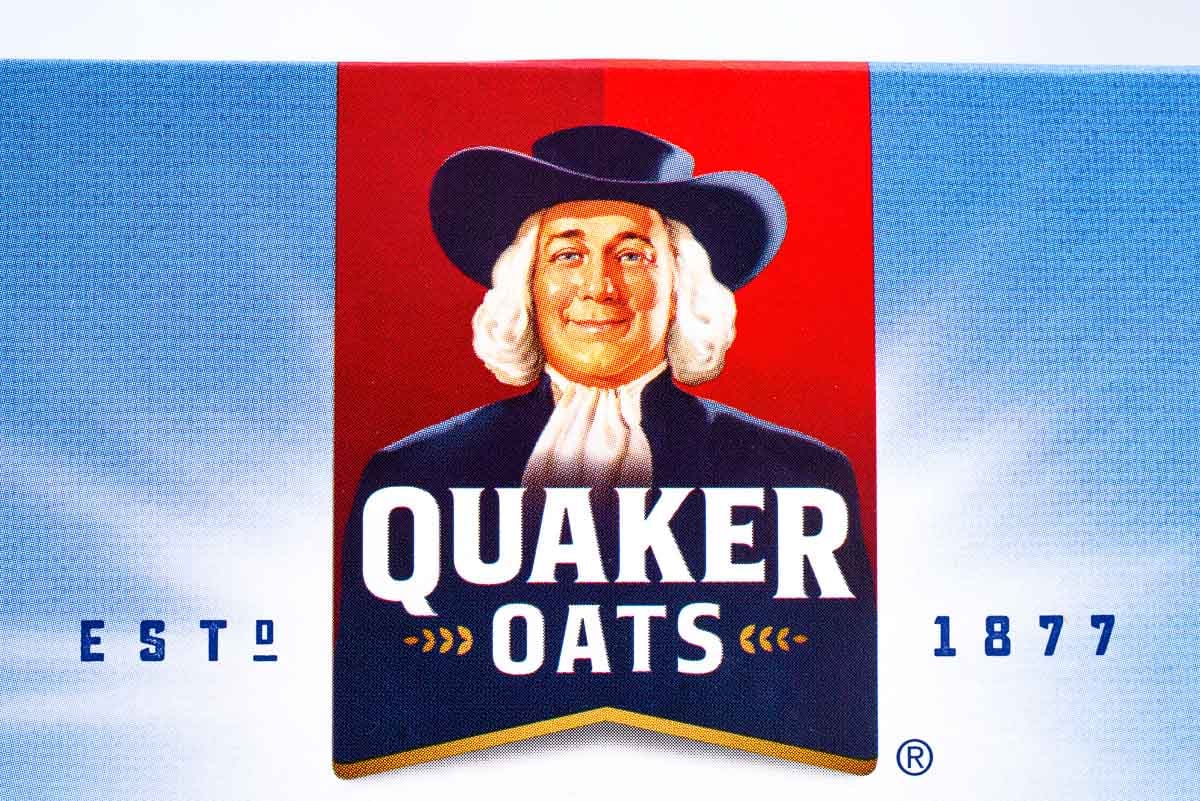
This cereal, made by Quaker Oats, a division of PepsiCo, consists of lightly sweetened whole grain oat squares. It was the seventh best-selling children’s cereal in the U.S., with sales of 200 million U.S. dollars and 57 million boxes sold.
Cheerios
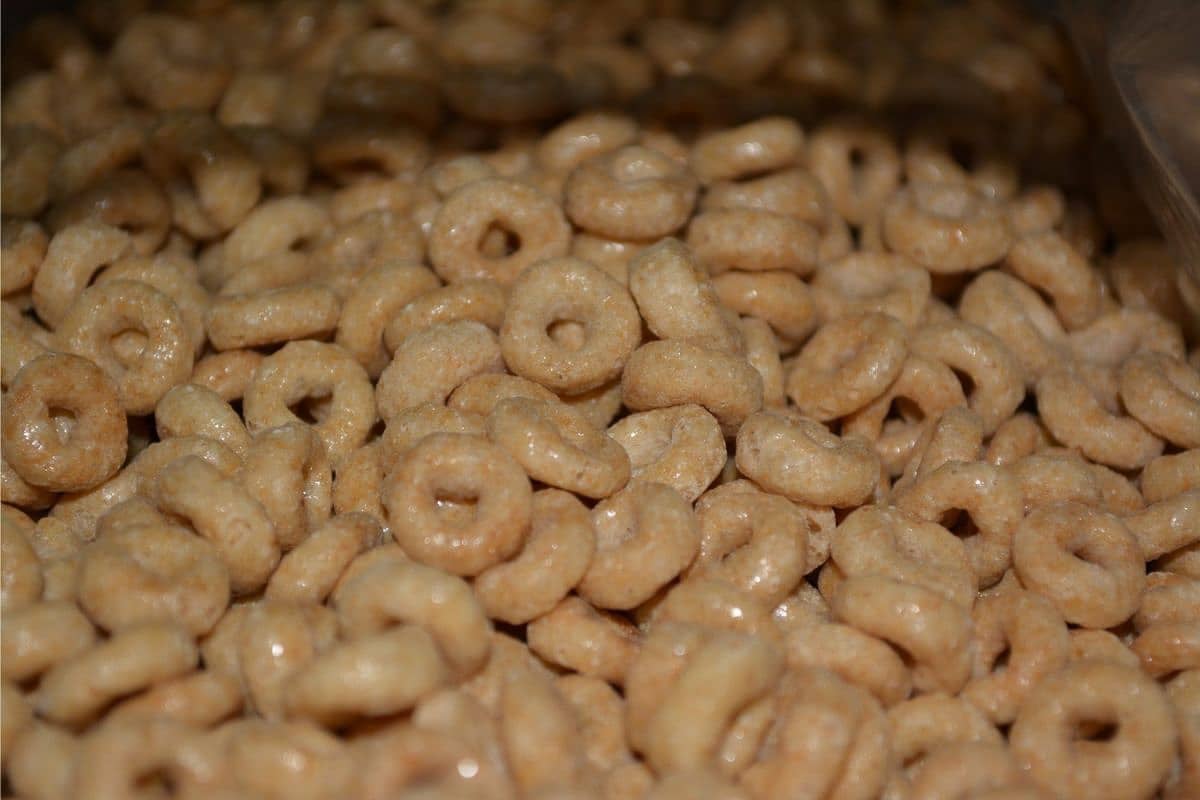
This cereal, made by General Mills, features toasted whole grain oat rings that are low in sugar and high in fiber. It was the eighth best-selling children’s cereal in the U.S., with sales of 198 million U.S. dollars and 60 million boxes sold.
Honey Nut Cheerios
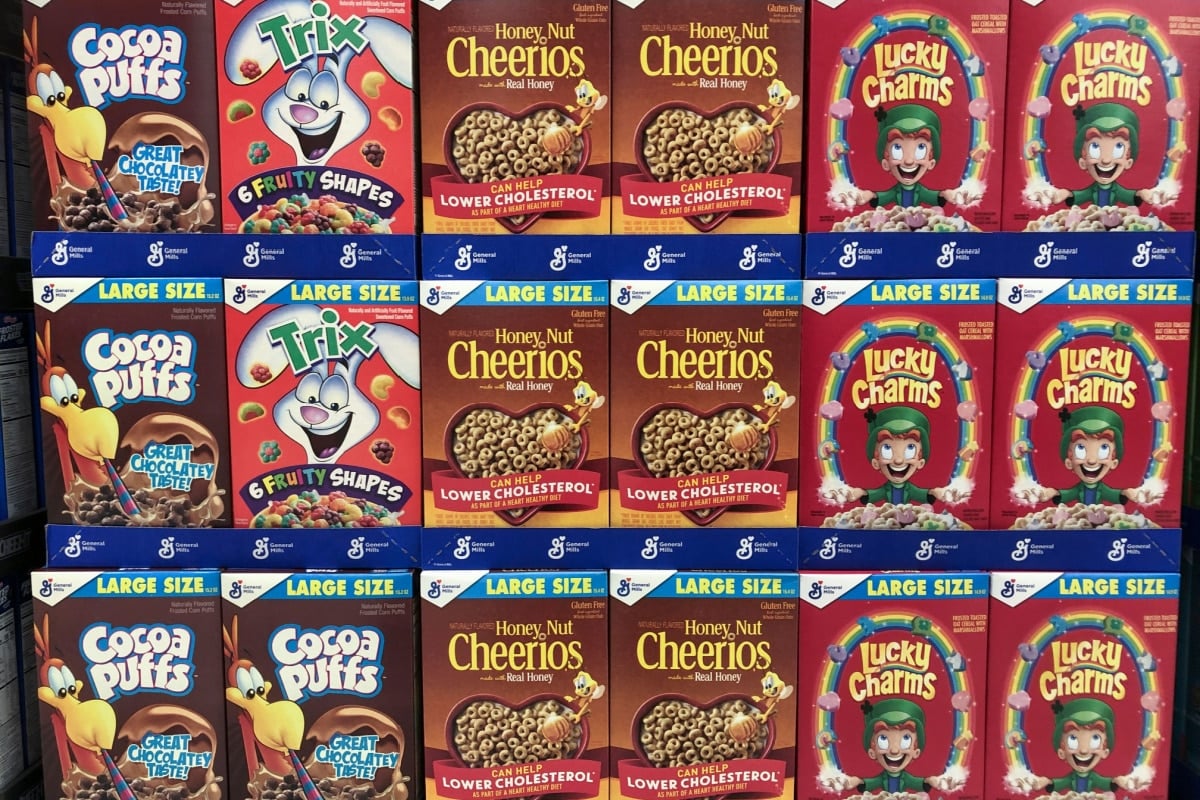
This cereal, made by General Mills, is a variation of Cheerios that has a sweeter taste and a nutty flavor from real honey and almond flavoring. It was the ninth best-selling children’s cereal in the U.S., with sales of 196 million U.S. dollars and 59 million boxes sold.
Reese’s Puffs
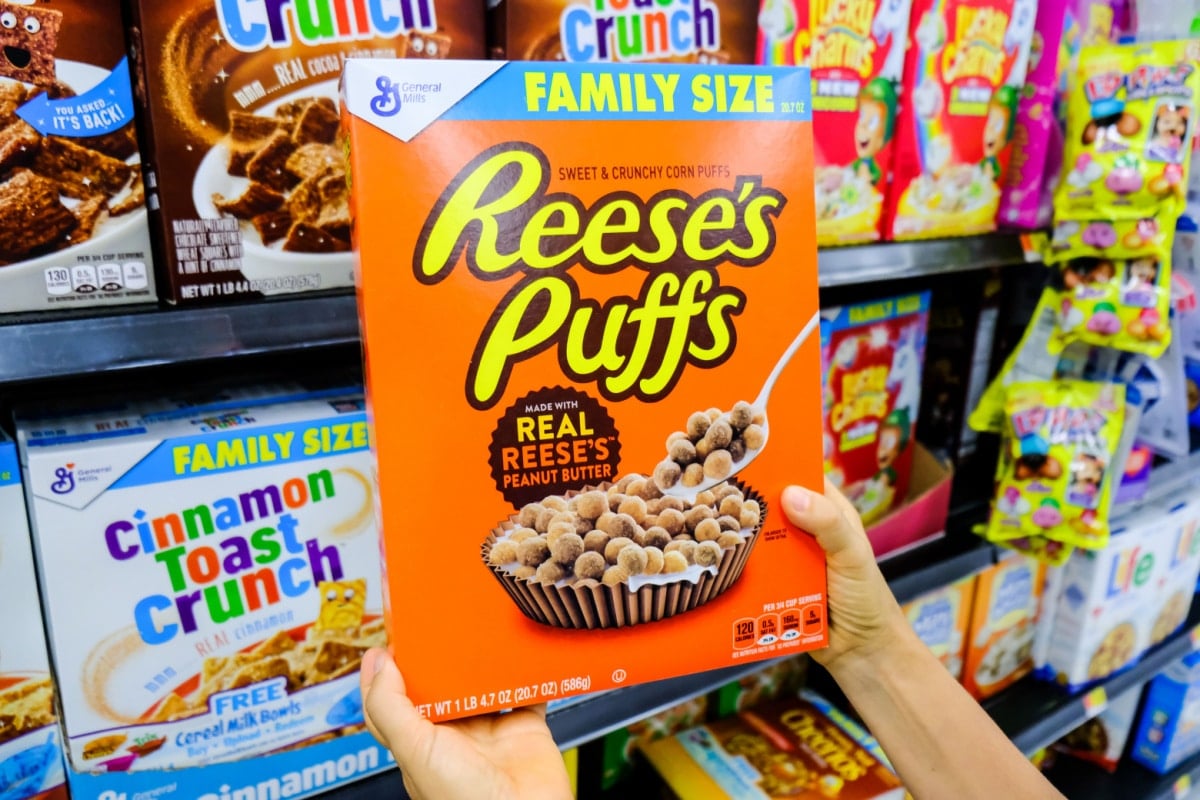
This cereal, made by General Mills, features crunchy corn puffs flavored with peanut butter and chocolate, inspired by the popular candy brand Reese’s. It was the tenth best-selling children’s cereal in the U.S., with sales of 186 million U.S. dollars and 54 million boxes sold.
Sugar, Sugar, Sugar

As we can see, most of these cereals are sweetened, flavored, or coated with sugar or frosting. Some of them also contain artificial colors or preservatives. While some of these cereals may have some nutritional value, such as whole grains, fiber, or fortified vitamins and minerals, they may also contribute to obesity, diabetes, tooth decay, or hyperactivity in children. Therefore, parents should be careful about choosing cereals for their children and limit their intake of added sugar.
Why Are Kids Cereals So High In Sugar?

There are several reasons why most of the popular breakfast cereals are so high in sugar: partly it is based on what buyers want, then there is cost, and of course, marketing.
Consumer Preference

Many people, especially children, prefer sweet and tasty foods over bland and boring ones. Sugar can enhance the flavor, texture, and appearance of cereals, making them more appealing and enjoyable to eat. Sugar can also mask the strong flavors of some ingredients, such as bran or fiber, that may be added to cereals for health reasons.
Marketing Strategy
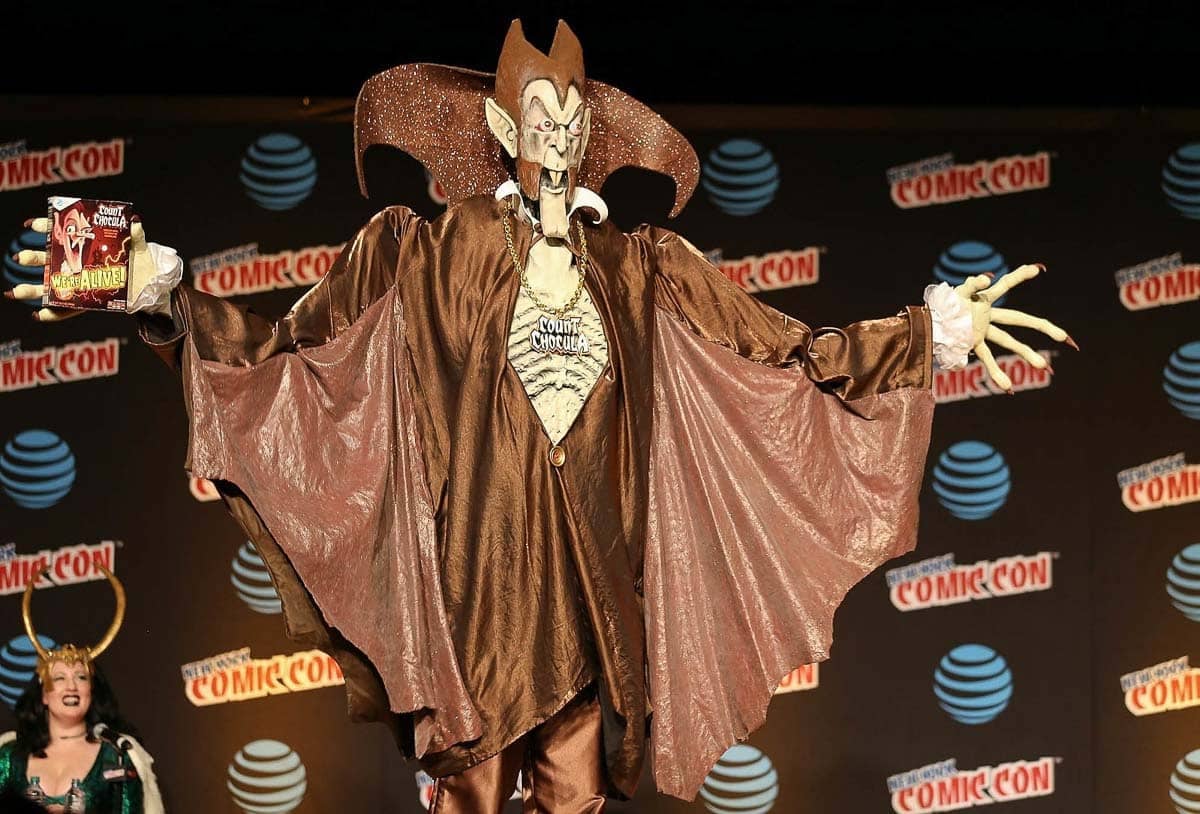
Cereal manufacturers use sugar as a way to attract and retain customers, especially in a competitive and saturated market. Sugar can create a sense of satisfaction, reward, and addiction in the brain, making people crave more of it. Sugar can also make cereals look more colorful, fun, and attractive, especially to children. Cereal manufacturers may use catchy names, slogans, mascots, or characters to associate their products with sugar and happiness.
Cost and Profit
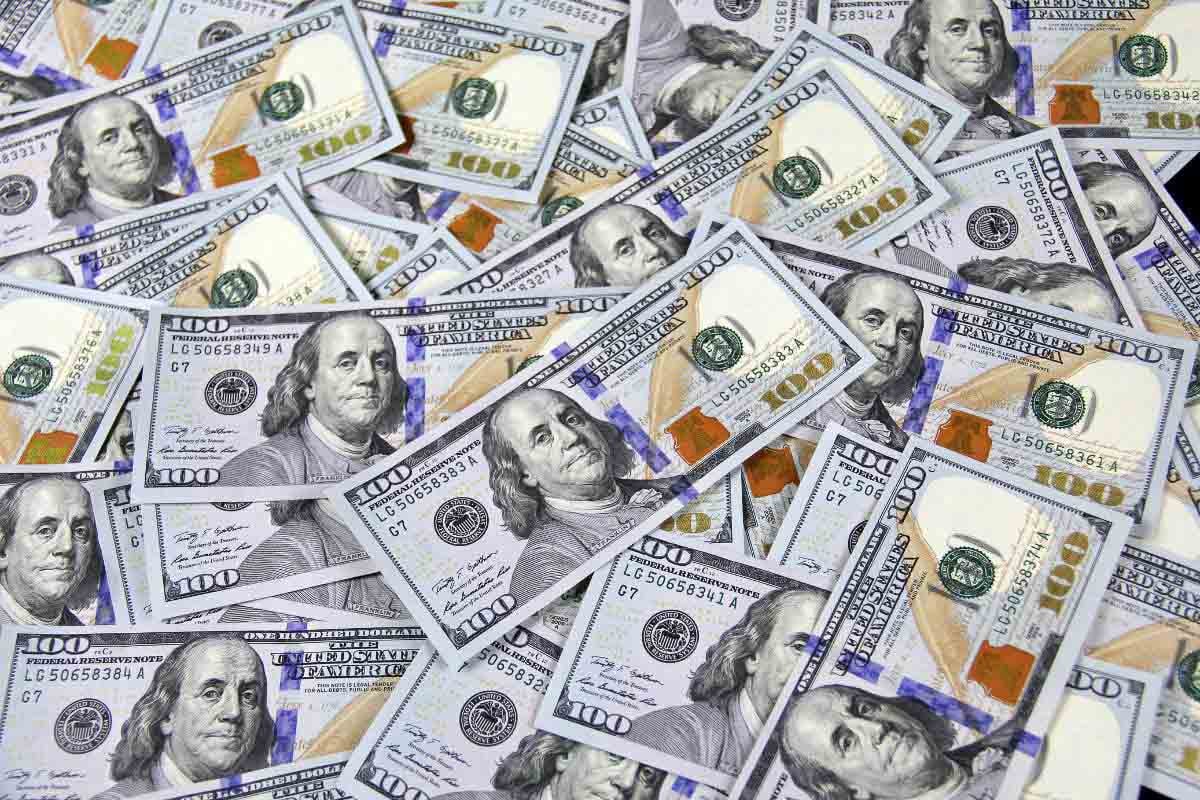
Sugar is a cheap and abundant ingredient that can increase the shelf life and weight of cereals. Adding sugar to cereals can reduce the cost of production and increase the profit margin for cereal manufacturers. Sugar can also act as a preservative, preventing spoilage and extending the freshness of cereals. Sugar also adds bulk and volume to cereals, making them seem more filling and satisfying.
Cereals Can Still Be Wholesome
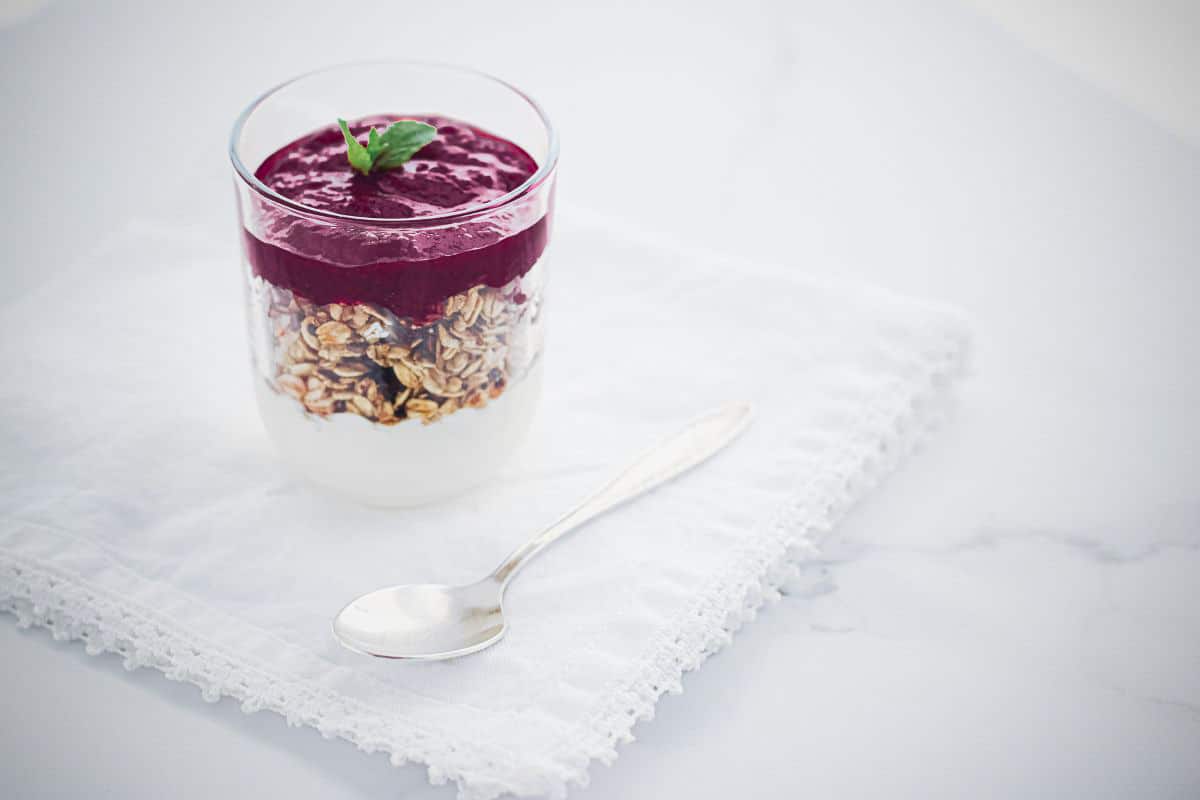
These are some of the main reasons why most of the popular breakfast cereals are so high in sugar. However, this does not mean that all cereals are unhealthy or that you should avoid them altogether. There are some cereals that are low in sugar and high in fiber, protein, vitamins, and minerals that can be part of a balanced and nutritious breakfast. You can also add fresh fruits, nuts, seeds, or yogurt to your cereal to make it more wholesome and delicious.
Top 10 Fast Food Breakfast Menu Items Sold in the US
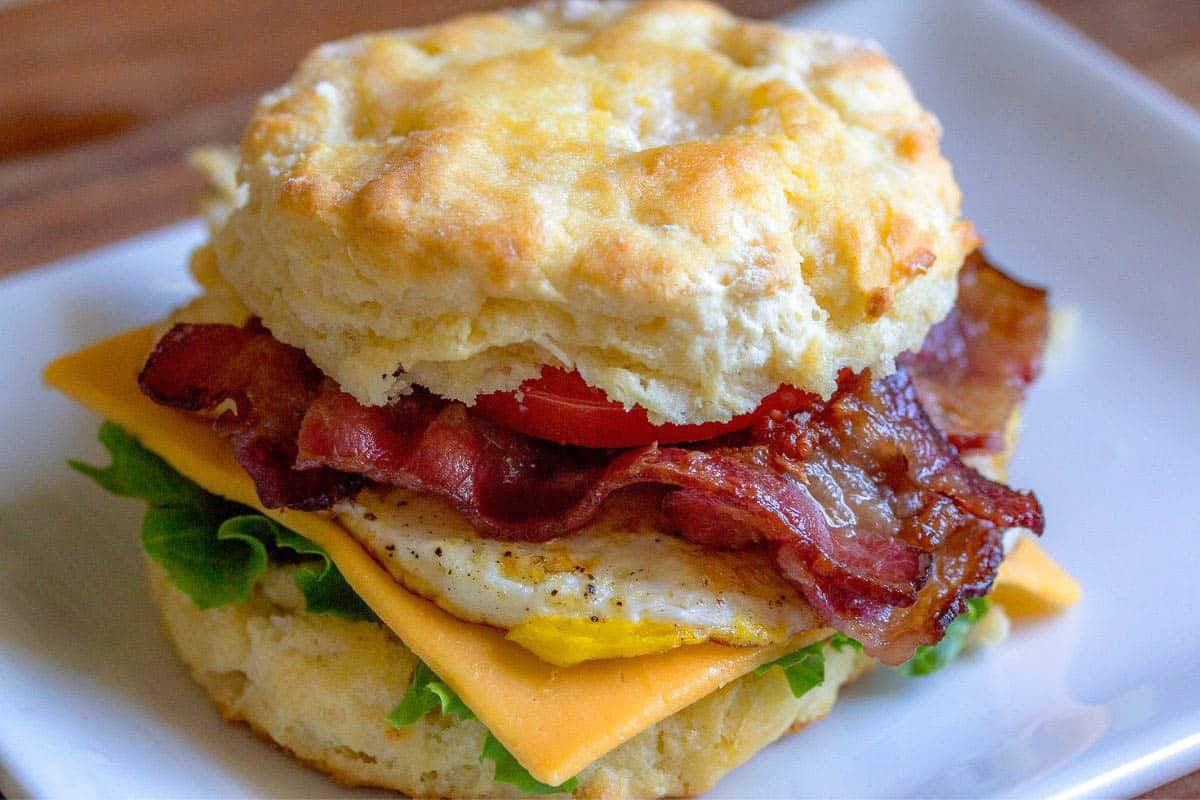
The second list is based on the best-selling breakfast items at fast food restaurants in the U.S. by market share in 2018, according to a report by Statista and data from IRI. Fast food is another popular option for breakfast, especially for busy adults who need a quick and convenient meal on the go. However, fast food is also notorious for being high in calories, fat, sodium, and cholesterol, and low in fiber, vitamins, and minerals. The top 10 breakfast items at fast food restaurants in the U.S. by market share in 2018 were:
McDonald’s Egg McMuffin
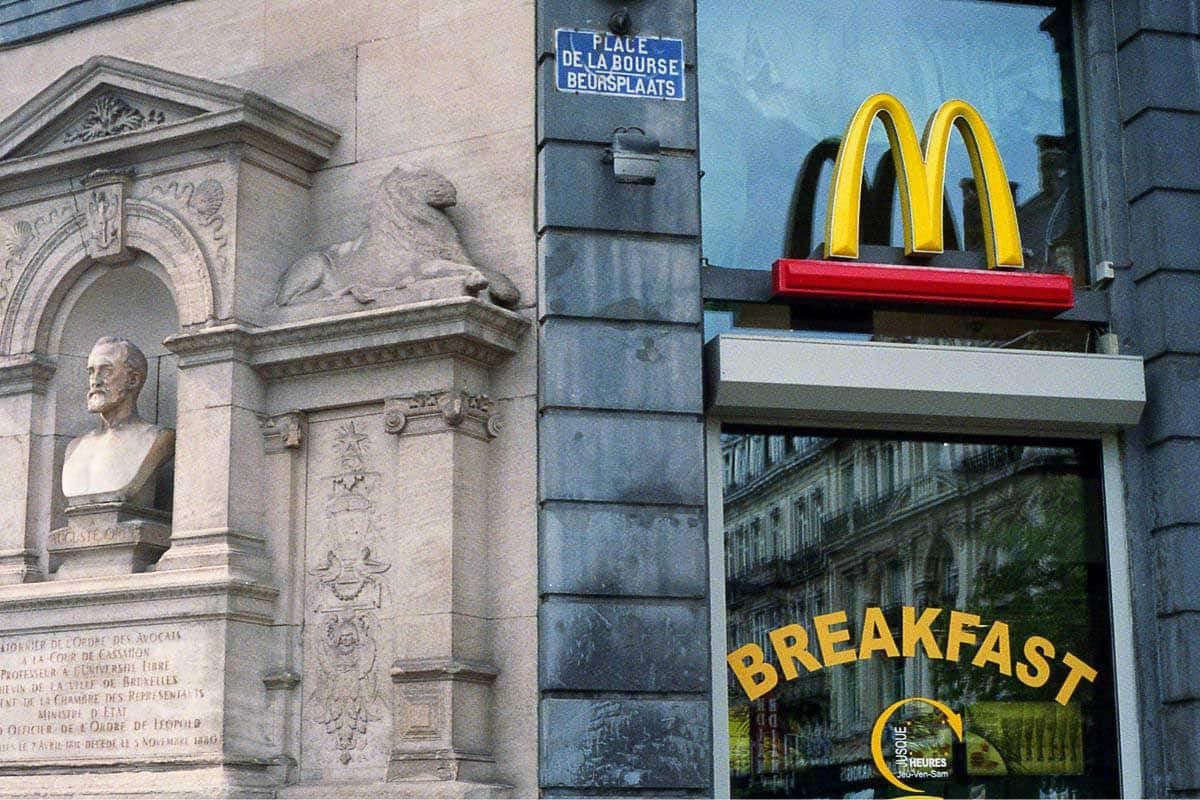
This item, introduced in 1972, features an English muffin with a slice of Canadian bacon, an egg, and American cheese. It was the most popular breakfast item at fast food restaurants in the U.S., with a market share of 17.1 percent and sales of 2.15 billion U.S. dollars.
Starbucks Coffee

This item, launched in 1971, is a brewed beverage made from roasted coffee beans. It was the second most popular breakfast item at fast food restaurants in the U.S., with a market share of 14.9 percent and sales of 1.88 billion U.S. dollars.
Dunkin’ Donuts Coffee
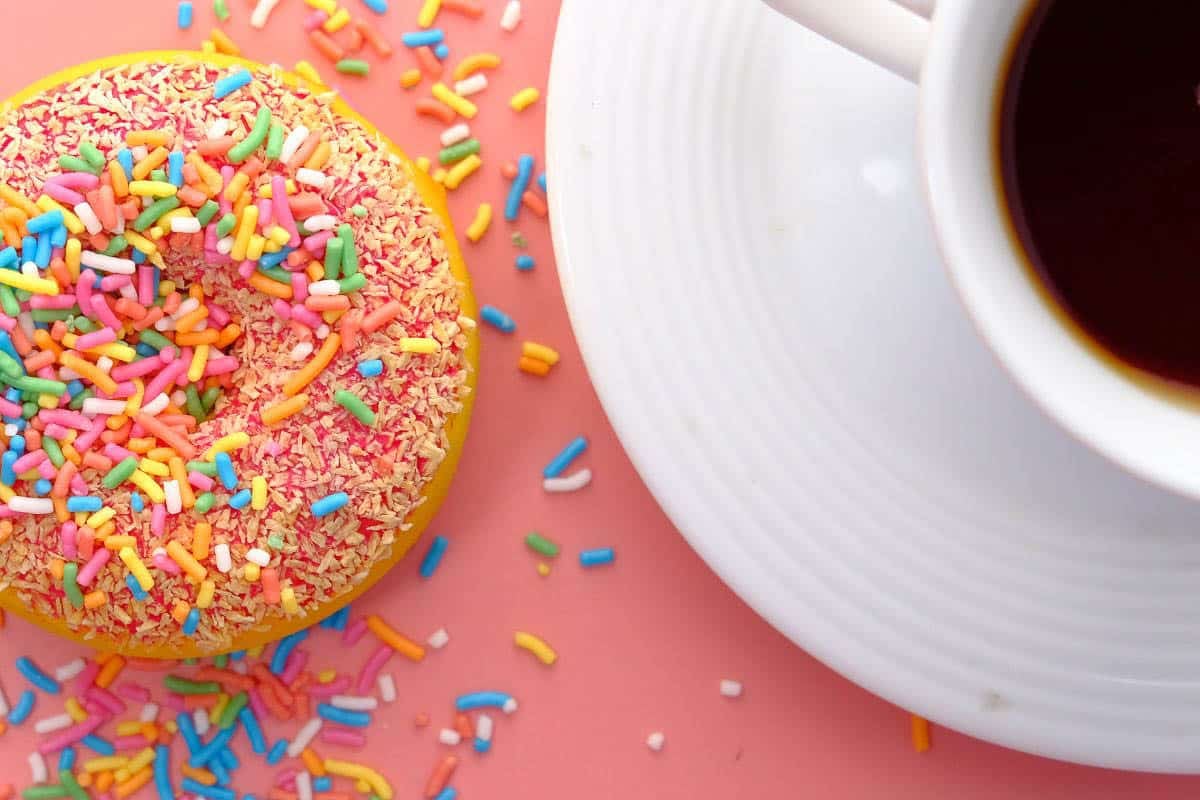
This item, founded in 1950, is a brewed beverage made from roasted coffee beans. It was the third most popular breakfast item at fast food restaurants in the U.S., with a market share of 14 percent and sales of 1.76 billion U.S. dollars.
McDonald’s Sausage Biscuit with Egg
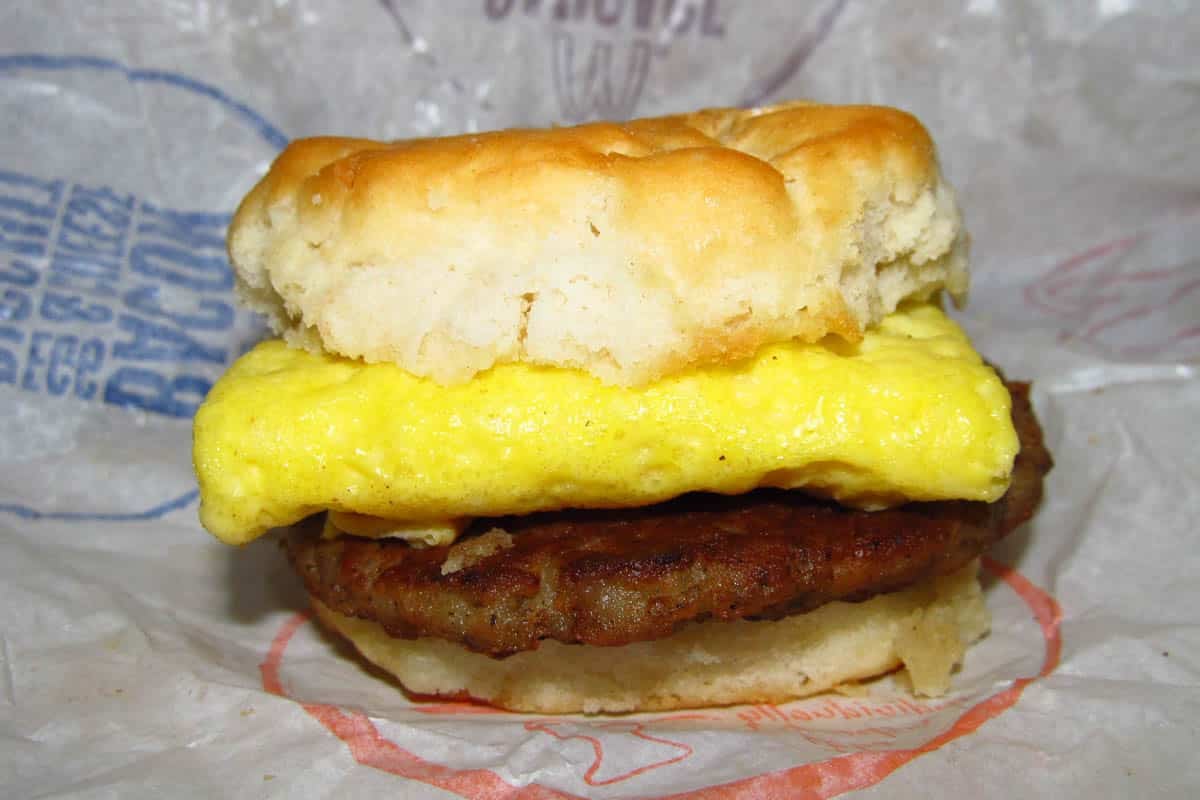
This item, introduced in 1975, features a buttermilk biscuit with a sausage patty, an egg, and American cheese. It was the fourth most popular breakfast item at fast food restaurants in the U.S., with a market share of 7.9 percent and sales of 995 million U.S. dollars.
McDonald’s Hash Browns
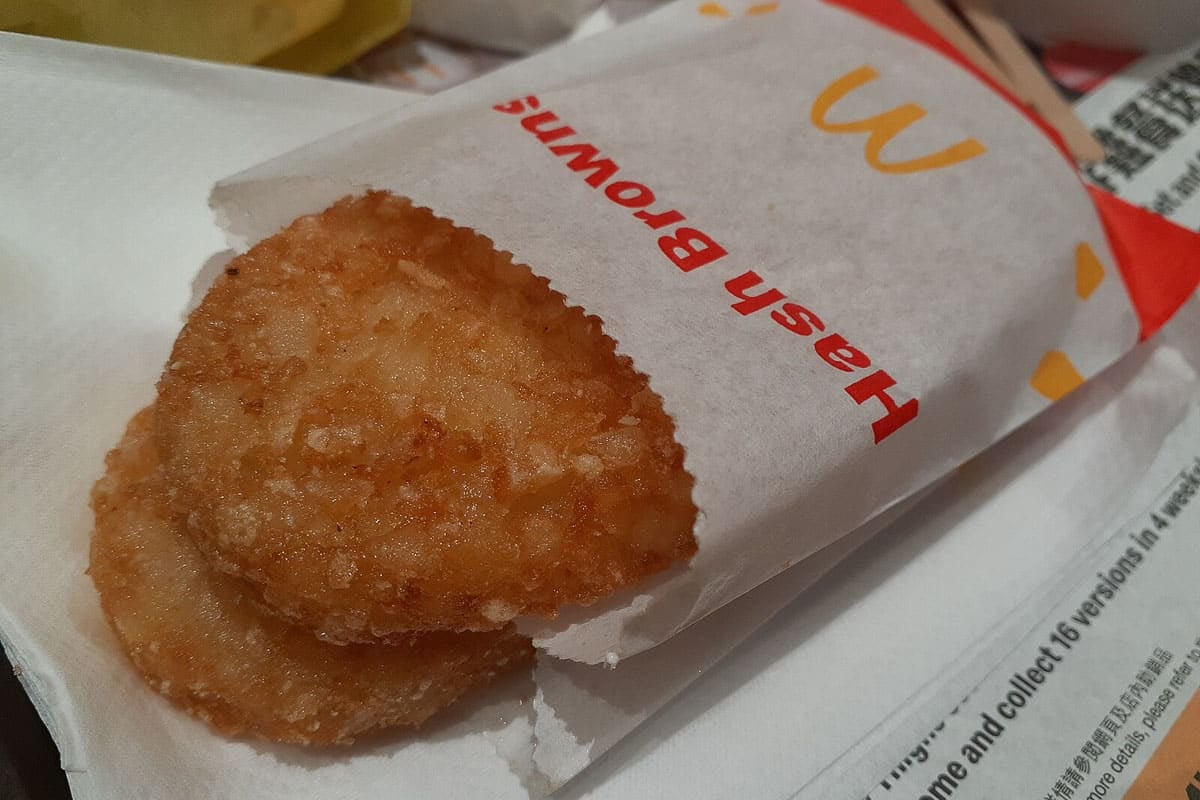
This item, introduced in 1968, consists of shredded potatoes that are fried until crispy and golden brown. It was the fifth most popular breakfast item at fast food restaurants in the U.S., with a market share of 6 percent and sales of 757 million U.S. dollars.
Chick-fil-A Chicken Biscuit
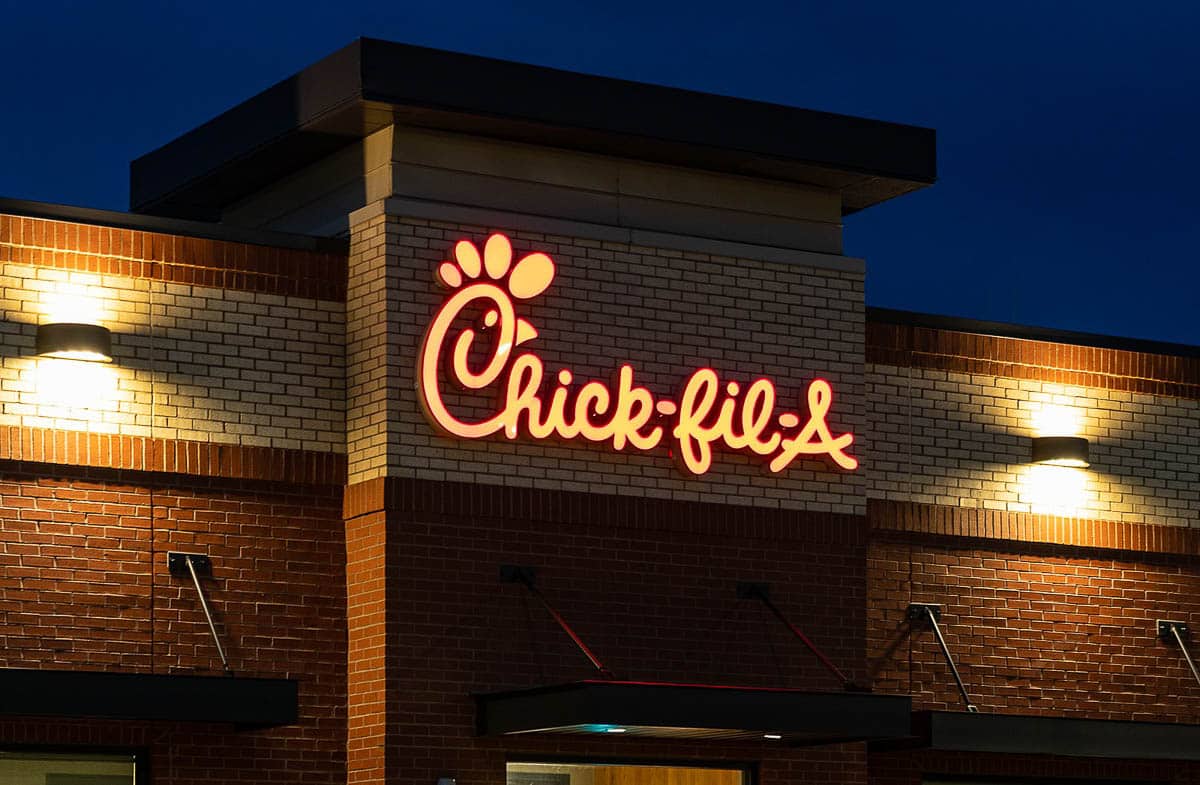
This item, introduced in 1986, features a buttermilk biscuit with a fried chicken fillet. It was the sixth most popular breakfast item at fast food restaurants in the U.S., with a market share of 4 percent and sales of 504 million U.S. dollars.
McDonald’s Sausage McMuffin with Egg
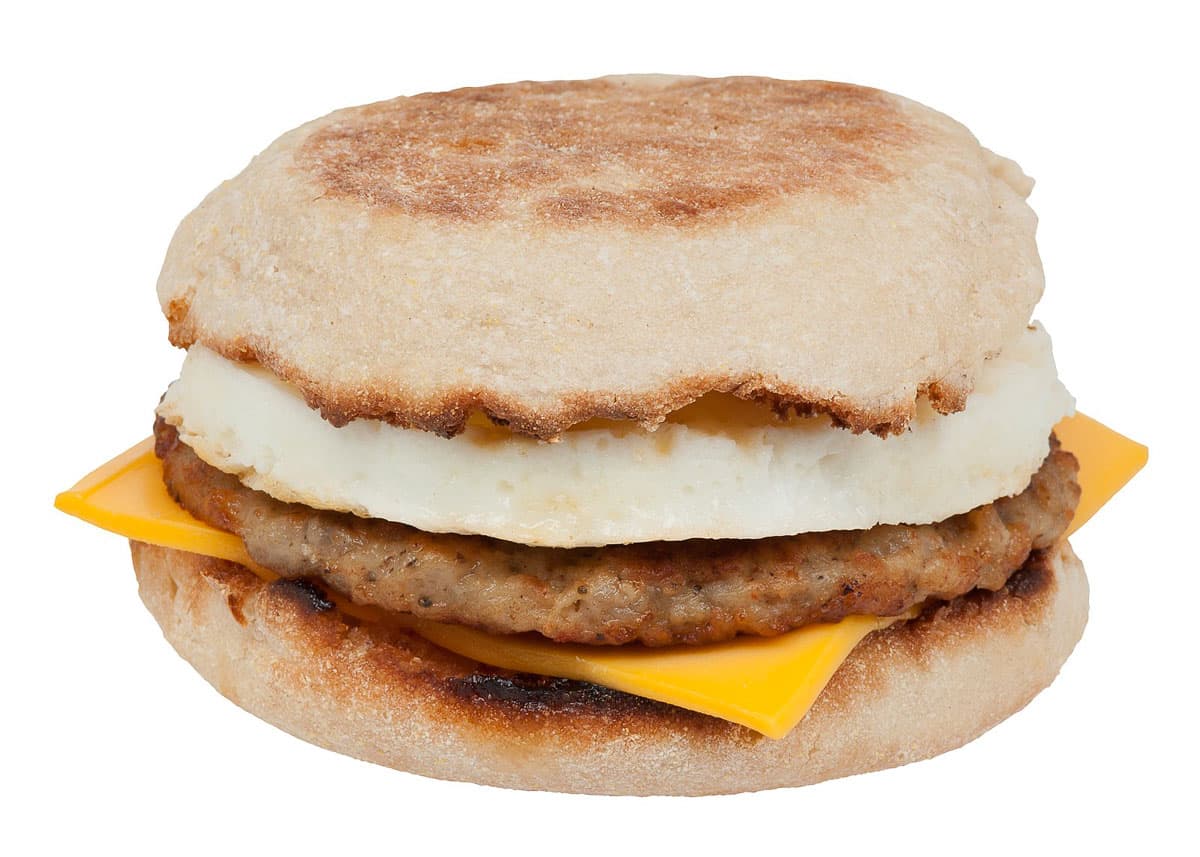
This item, introduced in 1975, features an English muffin with a sausage patty, an egg, and American cheese. It was the seventh most popular breakfast item at fast food restaurants in the U.S., with a market share of 3.9 percent and sales of 491 million U.S. dollars.
McDonald’s Bacon, Egg & Cheese Biscuit
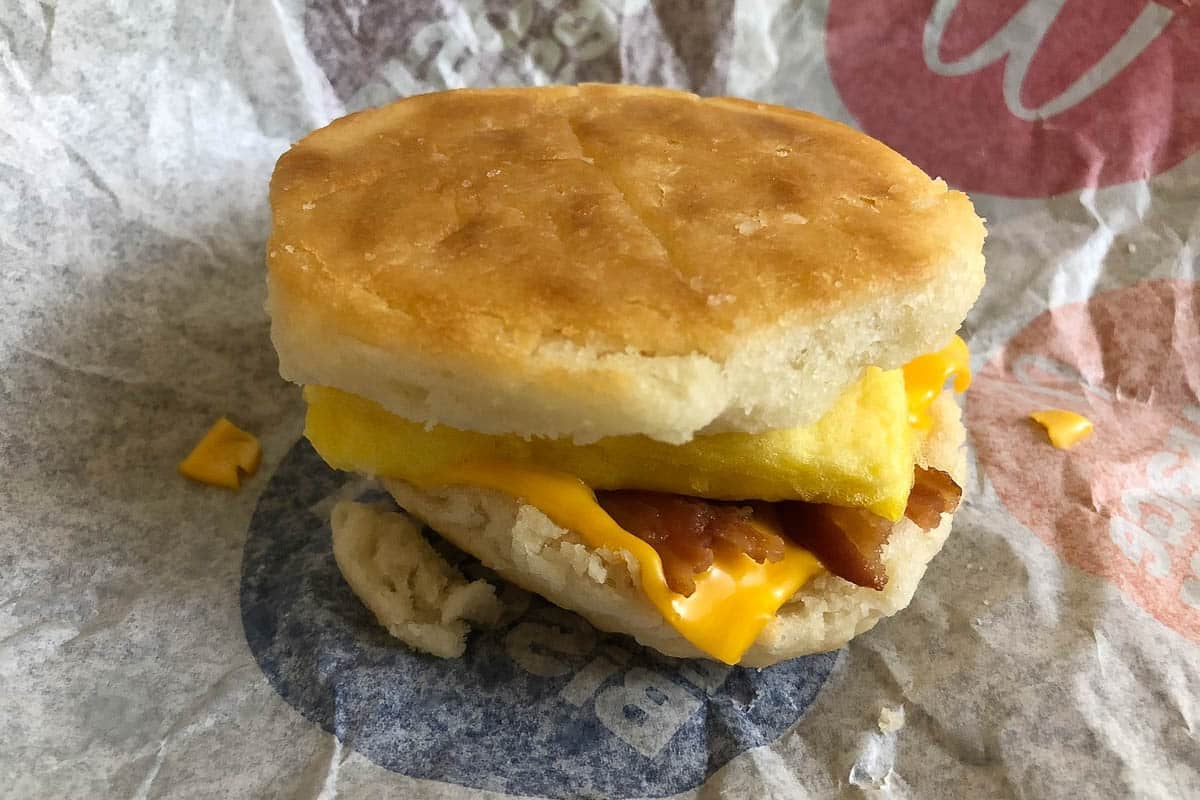
This item, introduced in 1984, features a buttermilk biscuit with bacon strips, an egg, and American cheese. It was the eighth most popular breakfast item at fast food restaurants in the U.S., with a market share of 3 percent and sales of 378 million U.S. dollars.
Starbucks Breakfast Sandwiches
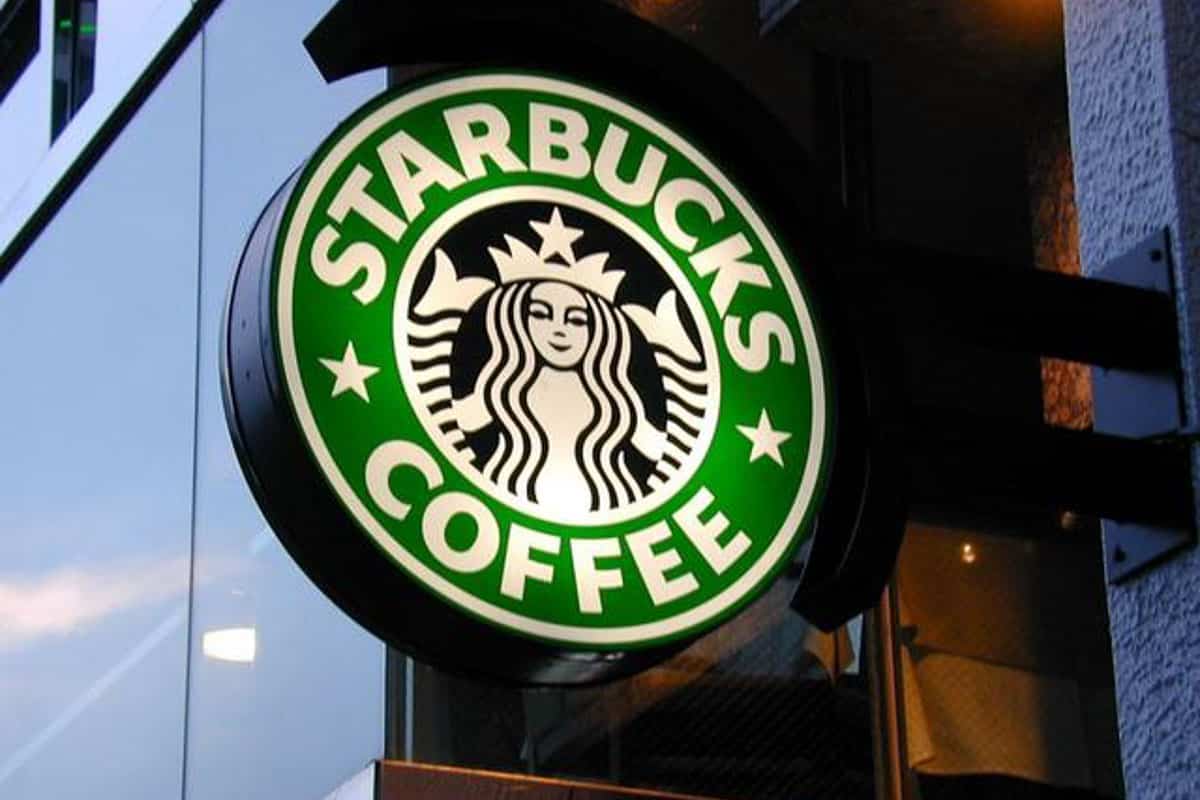
These items, launched in 2006, include various combinations of breads, meats, eggs, and cheeses that are heated and served as sandwiches. They were the ninth most popular breakfast items at fast food restaurants in the U.S., with a market share of 2.7 percent and sales of 340 million U.S. dollars.
Dunkin’ Donuts, Donuts
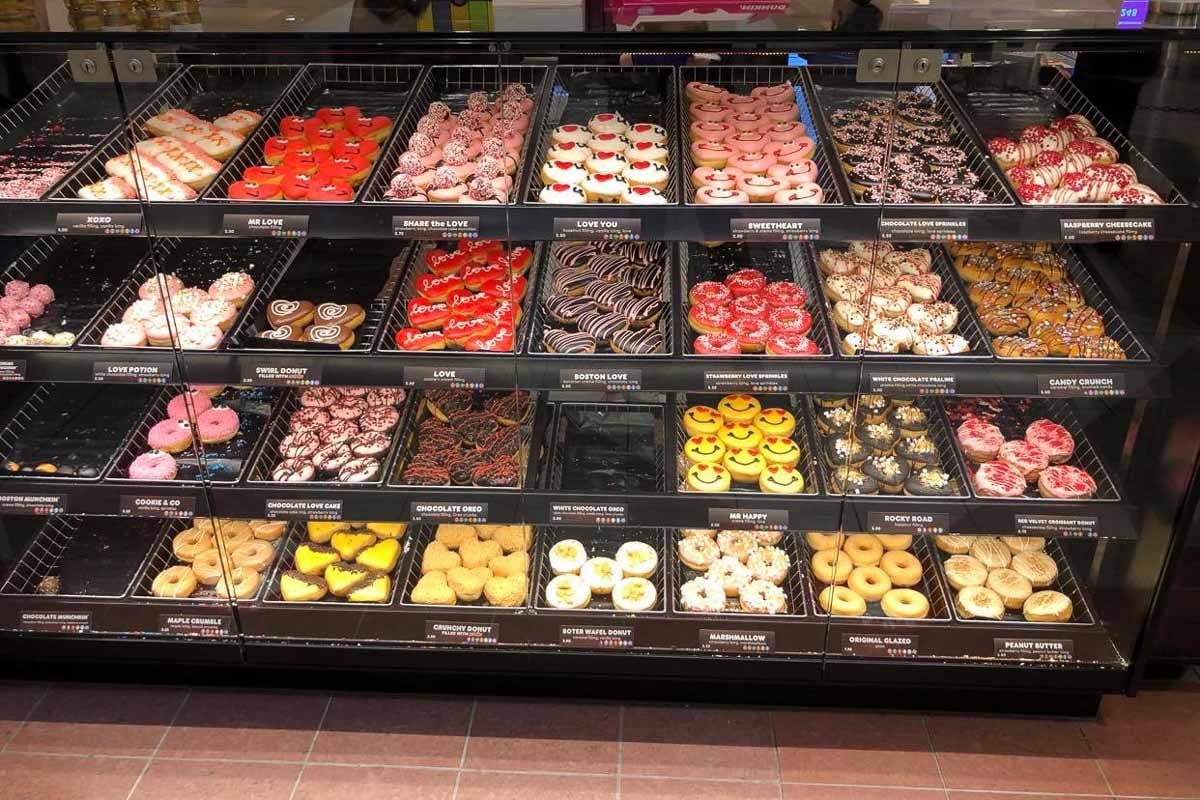
These items, founded in 1950, are sweet fried dough pastries that come in various flavors and shapes such as glazed, chocolate frosted, jelly filled, or sprinkled. They were the tenth most popular breakfast items at fast food restaurants in the U.S., with a market share of 2 percent and sales of 252 million U.S. dollars.
Fried and Processed Food For Adults
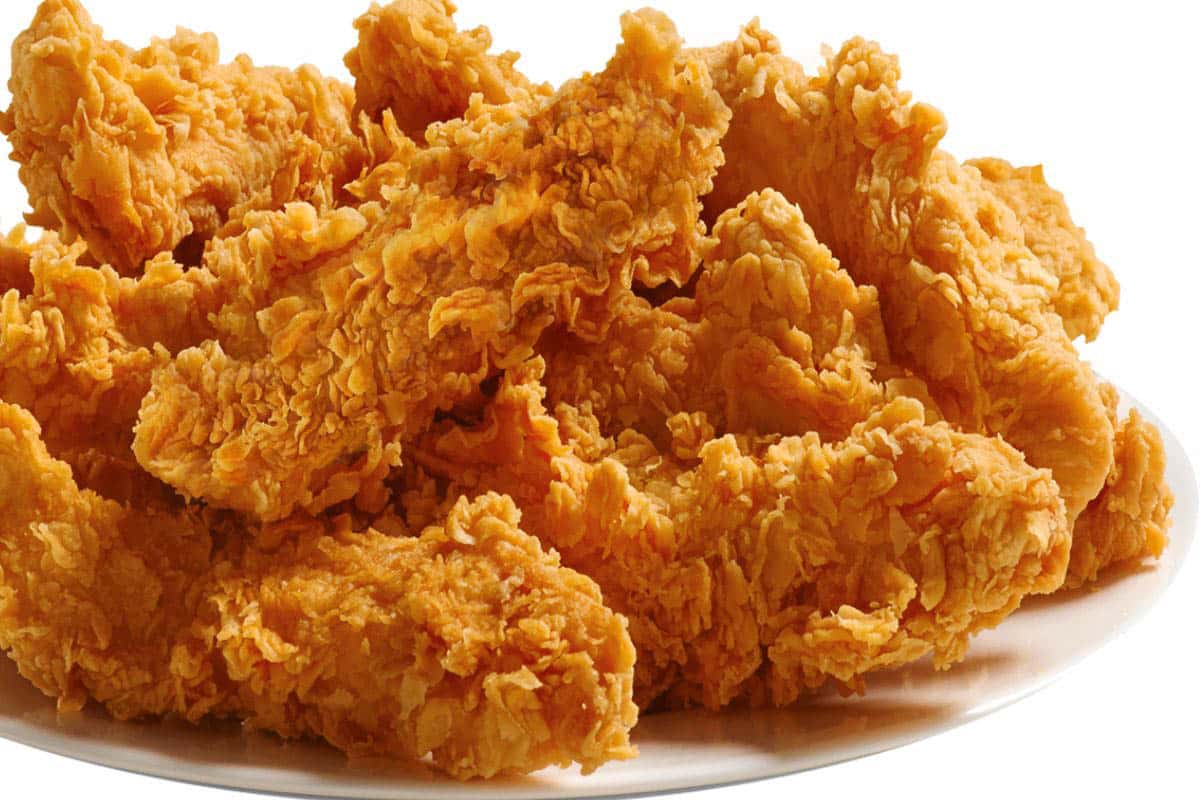
As we can see, most of these items are based on breads, meats, eggs, and cheeses that are fried or processed. Some of them also include coffee or donuts that are high in caffeine or sugar. While some of these items may provide some protein or energy, they may also increase the risk of heart disease, hypertension, or obesity in adults. Therefore, consumers should be mindful of their portion sizes and nutritional intake when eating fast food for breakfast.
Why Don’t Fast Food Restaurants Make Healthier Food?

We wanted to know why there are so few truly healthy choices when eating out at fast food restaurant and found that there are many factors that make it difficult for fast food restaurants to make healthy food.
Consumer Demand
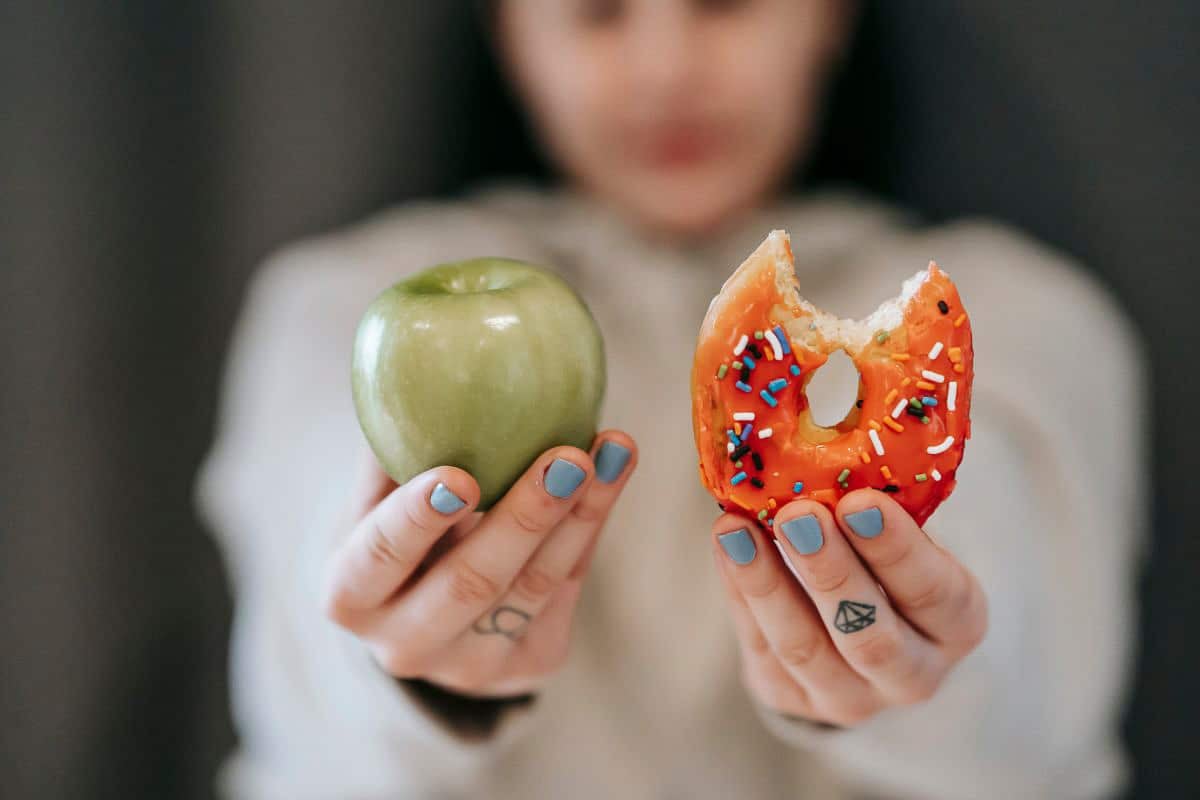
Fast food restaurants cater to the preferences and tastes of their customers, who often want food that is cheap, convenient, and satisfying. Many customers may not care about the nutritional quality of their food or may be unaware of the health consequences of eating fast food regularly. Therefore, fast food restaurants may not have enough incentive to offer more healthful options or may face lower sales if they do.
Cost and Profit
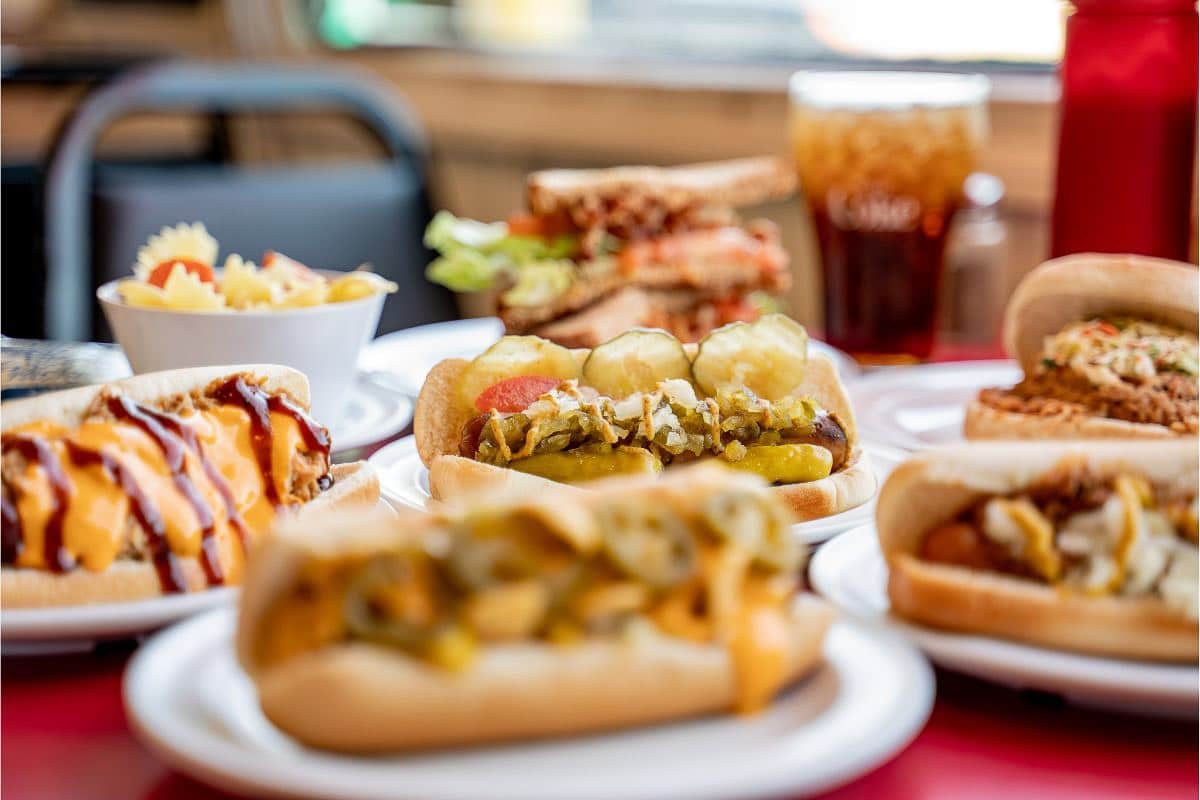
Fast food restaurants operate on low margins and high volumes, which means they need to keep their costs low and their profits high. This may lead them to use ingredients that are cheaper, but also less nutritious, such as refined grains, processed meats, added sugars, and artificial additives. These ingredients may also have a longer shelf life and require less preparation, which can reduce waste and labor costs.
Competition and Marketing
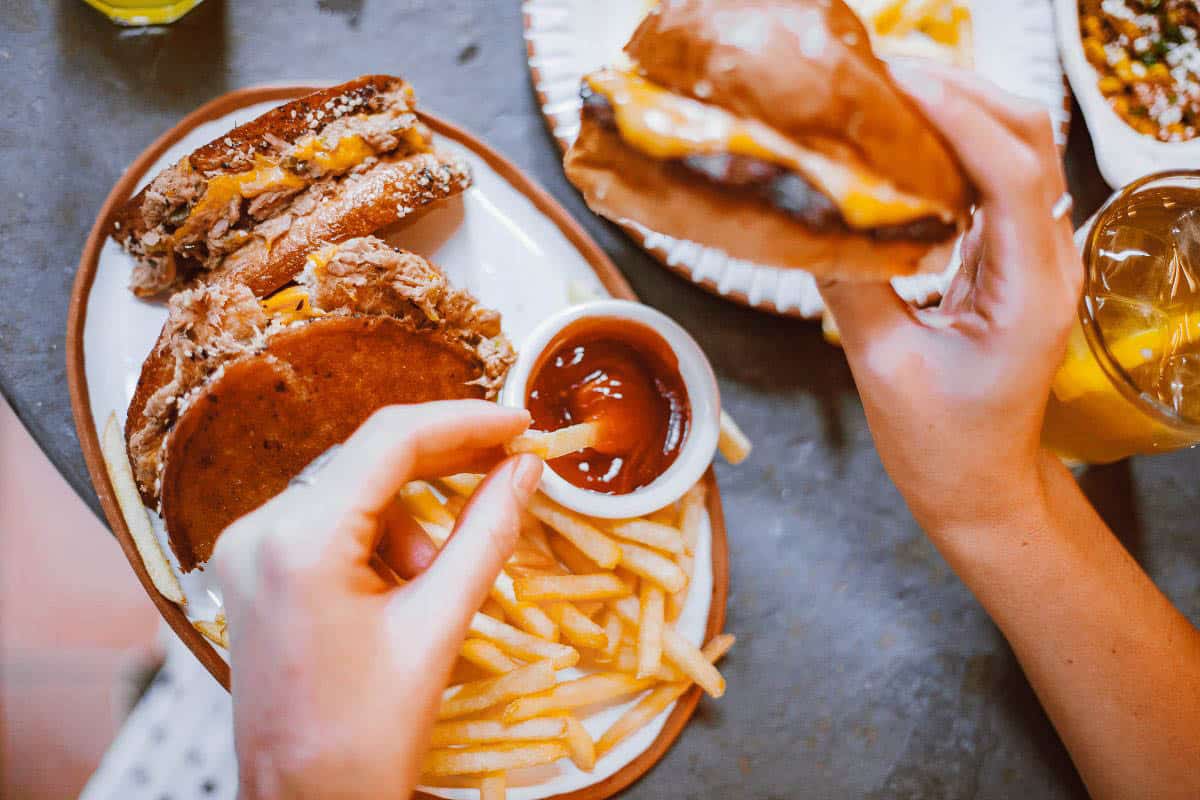
Fast food restaurants compete with each other for customers and market share, which may influence their menu choices and strategies. They may use marketing techniques such as advertising, promotions, discounts, or loyalty programs to attract and retain customers. They may also use tactics such as supersizing, bundling, or upselling to increase their sales and revenue. These practices may encourage customers to buy more food than they need or want, or to choose items that are less healthy.
Regulation and Policy

Fast food restaurants are subject to various regulations and policies that may affect their ability to make healthy food. For example, some cities have banned the use of trans fats or imposed taxes on sugary drinks, which may force fast food restaurants to change their recipes or prices. However, some regulations may also be ineffective or inconsistent, such as the labeling of calories or nutrition information, which may not be accurate or visible enough for customers to make informed choices.
Is It Hopeless? Are We Doomed To Be Unhealthy?
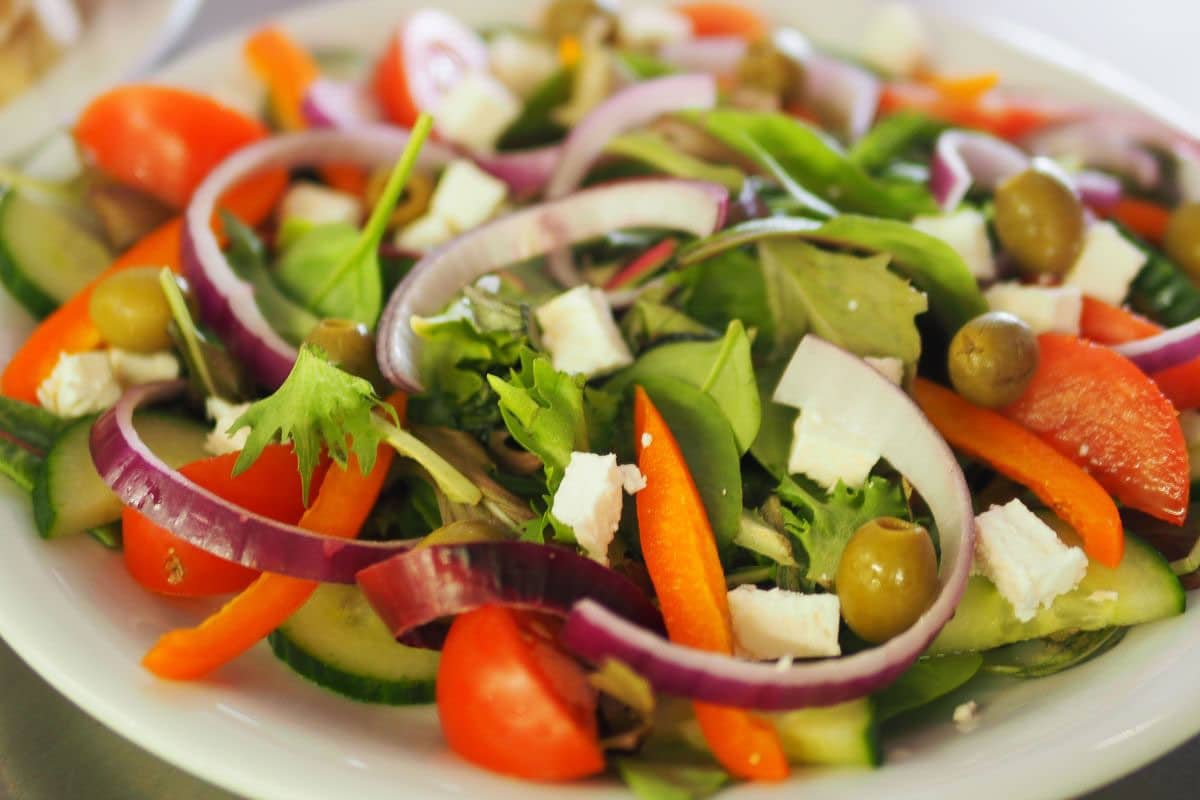
These are some of the main reasons why it is so difficult for fast food restaurants to make healthy food. However, this does not mean that it is impossible or hopeless. Some fast food restaurants have made efforts to improve the healthfulness of their menus, such as adding more salads, soups, fruits, vegetables, whole grains, lean proteins, or low-fat dairy products. Some have also reduced the portion sizes, calories, sodium, or fat content of their items. These changes may benefit not only the customers’ health, but also the restaurants’ reputation and social responsibility.
It’s Up To You

In conclusion, these two lists show us some of the most common breakfast choices that Americans make for themselves and their children. While these choices may be tasty and convenient, they may not be the healthiest or most balanced options for our well-being.
Try to eat more fresh fruits, vegetables, whole grains, low-fat dairy products, lean proteins, and healthy fats for breakfasts. These foods can provide us with more vitamins, minerals, fiber, antioxidants, and other beneficial nutrients that can help us stay healthy and energized throughout the day.
Low FODMAP Fast Food Options

Can you eat fast food while following the low FODMAP diet? Can you get anything low FODMAP at McDonald’s, Chipotle, Sonic, Taco Bell, Dominos, In-N-Out Burger, or Panera, to name just a few? This article, Low FODMAP Fast Food Options, covers several of your favorite fast food restaurants and offers guidance – because the answer is YES! Read Low FODMAP Fast Food Options
Low FODMAP Choices At Starbucks & Dunkin’ Donuts
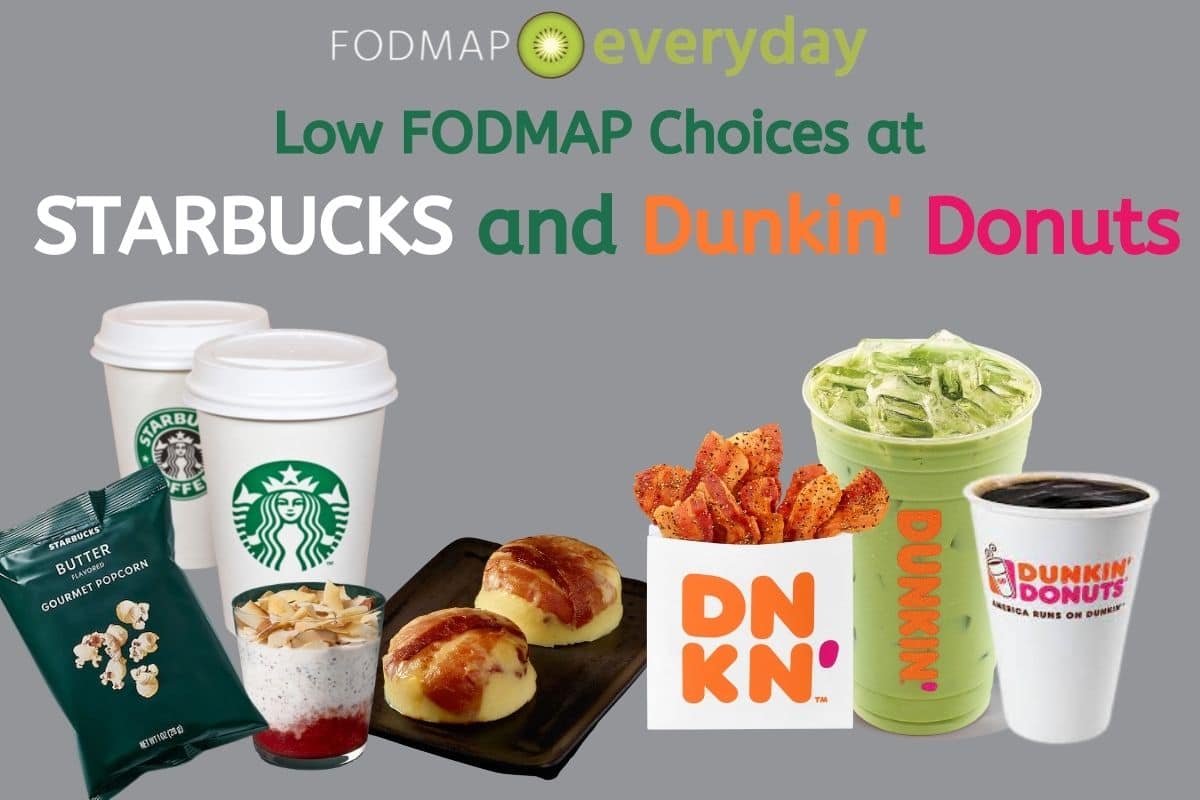
You just want to grab a hot drink and something to eat like everyone else. But you know that after you down that drive thru breakfast or snack or order that Venti sized drink that you’ll be bloated like a balloon or worse.
Hot coffee? Iced Frappuccino? Matcha Latte made with almond milk? What is your beverage of choice?
